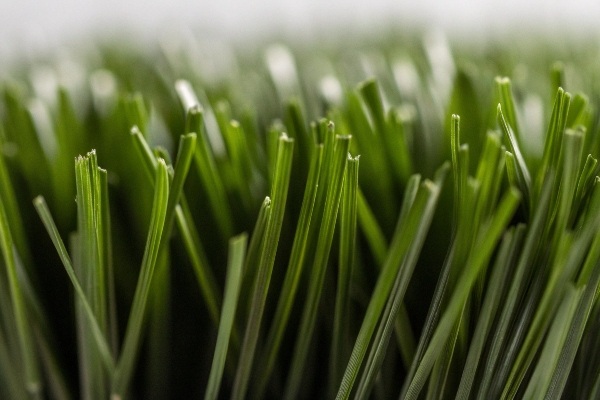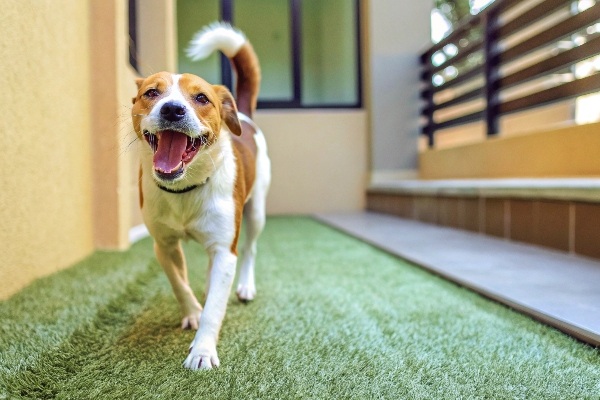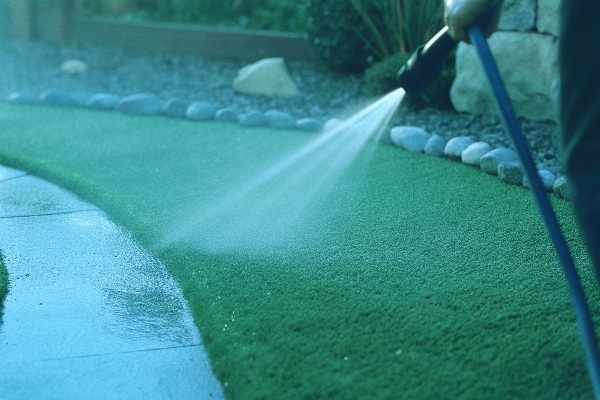Worried about pests in your beautiful lawn? Insects are a real headache in natural grass. Artificial turf, however, offers a much less inviting home for these unwanted guests.
Bugs generally cannot live in artificial grass. The synthetic fibers lack the soil, organic matter, and moisture that most insects need to survive and reproduce. This makes artificial turf a poor environment for bugs compared to a natural lawn, significantly reducing your risk of infestations.

This is great news for anyone tired of dealing with lawn pests. In my years in the artificial turf industry, this is one of the top benefits my clients appreciate. But you might have more specific questions. For example, what about common annoyances like fleas and ticks? Or what happens underneath the turf itself? Let’s look closer at these issues to give you a complete picture.
Can fleas and ticks live in artificial grass?
Fleas and ticks1 are a huge concern, especially for pet owners or playground projects. These pests thrive in natural grass. Artificial turf makes it much harder for them to survive.
Fleas and ticks find it very difficult to live in artificial grass. They need the moisture and organic debris found in natural soil to complete their life cycle. Artificial turf provides neither of these, making it a highly unsuitable habitat for them to lay eggs and multiply.

Throughout my career, I’ve worked with many clients who own pet facilities or install lawns for families. Their biggest relief is the reduced worry about these pests. The reason is simple and based on biology. Fleas and ticks don’t just live on your pets; their eggs and larvae develop in the surrounding environment. Natural lawns are perfect for them. Artificial lawns are the opposite.
Why Pests Avoid Artificial Turf
The synthetic material of artificial turf offers no nutritional value. Fleas and ticks need organic matter to hide and breed. Also, artificial grass has excellent drainage when installed correctly. This means the surface dries quickly after rain, removing the damp, humid conditions that these pests need. In direct sunlight, the turf surface can also get warmer than natural grass, which helps to dehydrate and deter these tiny creatures. It creates an environment that is simply too harsh for them to establish a population.
Comparing Habitats: Artificial vs. Natural
To make it clear, let’s compare the two environments side-by-side. You can see why one is a breeding ground and the other is a barrier.
| Feature | Natural Grass | Artificial Grass |
|---|---|---|
| Soil for Eggs | Present and ideal | Absent |
| Organic Debris | Abundant (food, shelter) | Minimal (easily cleaned) |
| Moisture Retention | High, stays damp | Low, drains and dries quickly |
| Surface Temperature | Cooler, shadier | Warmer in direct sun |
Do bugs live under artificial grass?
You have solved the surface problem, but what might be lurking beneath? An improper installation can create a hidden spot for bugs. Correct preparation is the key to preventing this issue completely.
Bugs can live under artificial grass, but only if the base layer is not prepared correctly. Poor drainage can lead to moisture buildup. This creates a damp environment where insects and bacteria will thrive. Proper installation with a well-drained sub-base is critical to prevent this.

This is a point I always stress with my clients. The quality of the artificial turf itself is very important, but the long-term success of your project depends heavily on the work done underneath. I have seen projects fail not because of the grass, but because the foundation was poorly planned. An improperly prepared base becomes a source of problems.
The Importance of the Sub-Base
The sub-base is the foundation of your artificial lawn. It is usually made of compacted stone and sand. Its main jobs are to provide a stable, level surface and to allow water to drain through freely. When drainage is poor, rainwater gets trapped between the turf backing and the ground. This standing water is a perfect breeding ground for mosquitos, ants, and grubs. The dampness also encourages moss and mold, which can attract more insects. It becomes the exact environment you were trying to avoid.
Common Issues from Poor Installation
A bad sub-base leads to many issues that attract bugs.
- Water Puddles: These are breeding grounds for mosquitoes.
- Weed Growth: If a weed barrier isn’t used or is low quality, weeds can grow. Weeds are organic material that will attract bugs.
- Uneven Surfaces: Dips and low spots collect water and organic debris, creating little ecosystems for insects.
A professional installation ensures the ground is properly graded and compacted. This prevents these issues and keeps the area under your turf dry and bug-free.
How to keep bugs out of artificial grass?
Even with the right turf and installation, you want to ensure it stays bug-free. Debris and spills can attract unwanted guests over time. A simple cleaning routine2 is all you need for peace of mind.
To keep bugs out, regularly rinse your artificial grass to remove debris, pollen, and spills. For a deeper clean, you can use a neutral disinfectant3. You must avoid acidic or chlorine-based cleaners like bleach, as they can damage the turf fibers and backing over time.

Think of your artificial lawn like any other surface of your property, such as a patio or deck. It needs occasional cleaning to stay in top condition. Fallen leaves, crumbs from outdoor eating, or pet waste can all accumulate. While these things won’t sustain a bug infestation on their own, they can attract pests if left for a long time. The solution is very simple maintenance.
Simple Maintenance Routine
First, regularly remove large debris like leaves and twigs with a rake or leaf blower. For dust, pollen, and smaller particles, a quick rinse with a garden hose is usually enough. If you have pets, be sure to remove solid waste and rinse the area to prevent odors that might attract insects. This basic care prevents the buildup of organic materials that bugs look for. It’s a quick job and makes a huge difference.
Choosing the Right Cleaner
Sometimes, you may want a deeper clean. It is critical to choose the right product. From my engineering background, I know that the polymers in artificial turf are strong, but they are not immune to harsh chemicals4. Acidic cleaners or those containing chlorine, like common household bleach (sodium hypochlorite), will attack the turf material. They can make the fibers brittle, cause discoloration, and damage the latex or polyurethane backing. This leads to the turf aging much faster. Always use a simple mix of water and mild soap5, or a cleaner specifically sold for artificial turf that has a neutral pH.
| Cleaner Type | Recommendation | Why Is It Recommended or Not? |
|---|---|---|
| Water | Highly Recommended | The safest and easiest option for regular cleaning. |
| Mild Soap / Neutral pH Cleaner | Recommended | Effective for deeper cleaning without harming the turf. |
| Acidic Cleaners (e.g., vinegar) | Avoid | Can degrade the turf backing and damage fibers. |
| Chlorine-Based Cleaners (e.g., bleach) | Avoid | Makes plastic brittle and causes color to fade. |
Conclusion
Artificial grass is a very poor habitat for bugs. Proper installation and simple, regular cleaning will ensure your lawn remains a beautiful, pest-free space for years to come.
-
Understanding the impact of fleas and ticks on pets can help you take preventive measures. ↩
-
Find out how a regular cleaning routine can help keep your artificial grass looking fresh and pest-free. ↩
-
Discover the benefits of using a neutral disinfectant to maintain your artificial grass without causing damage. ↩
-
Learn about the harmful effects of harsh chemicals on artificial grass and how to choose safe alternatives. ↩
-
Understand why mild soap is recommended for cleaning artificial grass and how it protects the turf. ↩
_画板-1.png)
_画板-1.png)